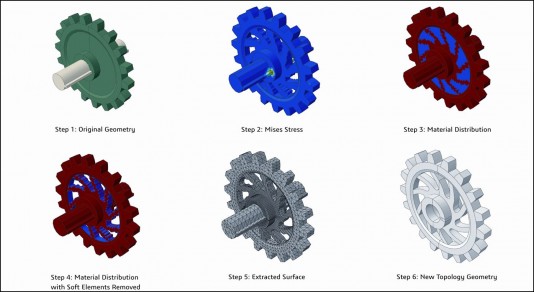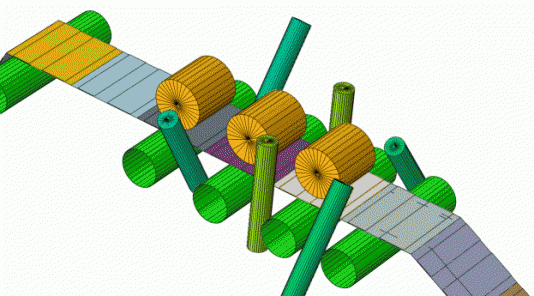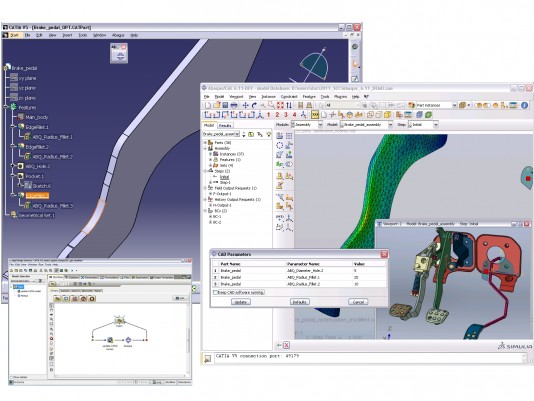The latest release of Dassault Systemes’ finite element analysis suite also offers new electromagnetic analysis capabilites among its 100+ enhancements.
The new release of Simulia Abaqus, the unified finite element analysis (FEA) suite from Dassault Systemes, offers a new module for topology optimization, a new electromagnetics analysis solution, and support for graphics processing units (GPU) among its more than 100 enhancements.

Abaqus 6.11 is the first release to offer the Abaqus topology Optimization Module, known as ATOM. The add-on enables Abaque users to perform topology and shape optimization for single parts and assemblies, while taking into account large deformation, material nonlinearity, and contact issues.

The Abaqus update also introduces a new electromagnetics solution technology to solve problems requiring time-harmonic eddy current analysis, such as the hardening of a bearing surface due to induction. In addition, this release provides a new smoothed particle hydrodynamics capability for modeling violent free-surface flows, such as fluid sloshing.

Performance can be improved in the new release with the use of Nvidia Cuda-based GPUs. Dassault claims a 2x speed increase for most simulations when harnassing the GPU.
Other enhancements in Abaqus 6.11 include:
- Interactive mapping capability for importing and applying spatially varying parameter values based on an external data source, such as pressure loads from a computational fluid dynamics (CFD) application
- Capabilities for more realistic and efficient large-scale fastener modeling for applications such as rivets on an aircraft fuselage
- Ability to display stress variation on beam sections, such as structural members of an offshore platform subjected to wave loading
- Additional options for freebody force and moment output including the ability to display output at multiple sections and history plots
- Parallel frequency response solver to support shared memory parallel (SMP) with up to 24-cores, providing class leading performance
- Enhanced CATIA V5 Bidirectional Associative Interface (AI) provides seamless parameter updating for rapid design analysis iteration.






